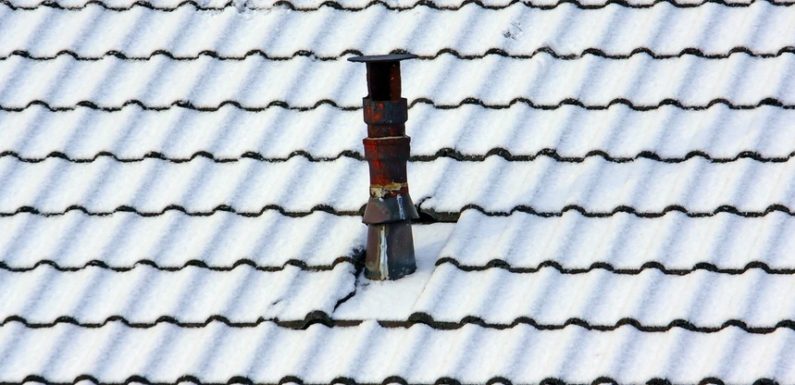
The most common home water problems are leaks or flooding from various sources and contamination of your home’s water supply.
Table of Contents
Leaks and Flooding
The most frequent entry points through which water can enter your home (from the top of the house down) are:
Common residential roofing materials include basic asphalt shingles, concrete tiles, wood shakes, and standing-seam metal panels. Materials vary significantly in cost and durability, but they do have one thing in common: they all can leak. When your roof springs a leak, it can be frustratingly difficult to find the source.
- Roof: Roof leaks come in two types: roofing failures and flashing leaks. Roofing failures are usually the result of age or wind damage. Flashing leaks may occur in roof valleys, around plumbing pipes and exhaust fans, and along the joint where a roof section on a lower story abuts a side wall on a higher story.
- Gutters and downspouts: Without proper maintenance, gutters and downspouts can easily become blocked by an accumulation of debris. This prevents the channeling of rainwater away from the house. Instead, rainwater may spill over the lip of the gutter and run down the exterior of the house, staining siding and windows. Cold temperatures can freeze water that doesn’t drain, allowing ice dams to form. Ice dams expand under the roofing and leak through the roof sheathing and into the ceiling below.
- Windows and doors: Flashing and caulking failures around windows and doors can lead to serious water damage. Once water penetrates the protective envelope formed by roofing, siding, flashing, and caulk, the dry wood framing beneath starts to absorb water like a sponge. Soon after, rot sets in. If you don’t repair leaks, the rot keeps spreading, weakening the wood and attracting carpenter ants and termites.
- Landscape grading: Depending on how the soil around your house grades (slopes), rainwater can be directed either toward or away from the fountain wall. If soil grades toward the wall, water can accumulate against the foundation, seep through the ground, and enter your basement through the joint between the bottom of the wall and the edge of the basement floor. If soil grades away from the house, on the other hand, water drains away from the foundation wall. The less water that bears against a wall, the less chance of water getting inside the house.
- Groundwater: If you live in an area with a high water table or a nearby underground spring, it may take only a couple rainy days or some typical spring snowmelt to force a lot of groundwater against the foundation of your house and into the basement through any existing cracks or joints. A well-designed drainage system will have exterior drainpipes around the foundation (next to the footings) to carry this water away. You can also remove ground water (less successfully) with a combination of interior drainpipes and a sump pump.
Just like leaks and other unwanted water in the house, troubles with your water supply can be a serious problem. Water that’s contaminated with biological or chemical impurities can threaten your health—or your life—if you drink it. Water that’s contaminated with minerals may not be able to clean clothes and household surfaces properly.
If you have public water, its purity is maintained by your local utility and checked by county and state health departments. But if your water is supplied by your own well or spring, test it for germs once a year and for chemical contamination every three years. Contact a professional lab, listed in the phone book or online under “water testing” or “water analysis.” You can also improve the quality of your water yourself with the following tools:
- Faucet-mounted carbon filters: These treat only the water you use for drinking and cooking. They come with replaceable cartridges that remove sediment and biological impurities.
- Reverse-osmosis (RO) filters: These remove chemical contaminants. They’re usually mounted under the sink along with an in-line carbon filter that removes sediment and biological impurities.
- Water softener: Hard water contains high levels of dissolved minerals, such as magnesium and calcium, that accumulate as deposits on metal surfaces and make cleaning difficult. Water softener removes them.
Ice Dams
One preventable source of roof leaks is ice dams, which form in gutters due to poor drainage or heavy, wet snow that fills the gutters and quickly freezes. An ice dam prevents the gutter from draining. The problems start when heat passing through the roof melts the snow, and the water from this snow drains down to the gutter, hits the dam, and backs up under the roof shingles. It then drips into the attic space and ultimately damages the ceiling below. The best way to prevent ice dams is to keep gutters clean and add insulation to your attic to keep the roof cooler.
Roofing Failure
Another, less preventable source of roof leaks is roofing failure—that is, the structural failure of roofing materials. To make repairs in the most common roofing material—asphalt shingles—use the following approach:
- Go into the attic space during a rainstorm and inspect all the rafters or trusses with a flashlight. Look for damp or wet areas and mark them with a black felt marker.
- When the rain stops, look for any holes in the roof next to the leaking areas you marked. If you see sunlight coming through, you’ve found a hole. Push a small nail through each hole to mark these spots.
- Go onto the top of the roof and find your projecting nails. Push the nails back through the sheathing and fill the holes with plastic roof cement. Use cement that’s packaged in a caulk tube for easy application.
- If you see leaks around flashing for chimneys, plumbing pipes, or roof vents, fill these holes with plastic roof cement. Chip out the old sealant first with a hammer and cold chisel, and brush away any dust.


